Next -- WUF's wish list

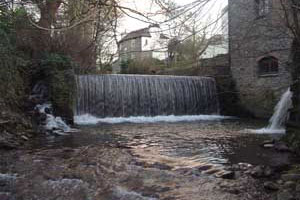
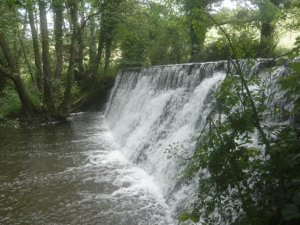
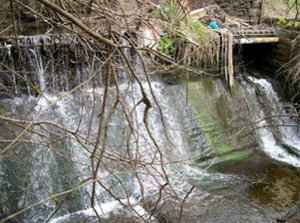
What's next on our wish list or forward work plan?
Restoring fish habitats is by far the best use of our funds. Each year, we add to the amount completed but there remain a number of important sites to complete. Habitat restoration includes restoring access to spawning grounds, fencing out stock and tree management, reducing the effects of acidity and diffuse pollution
Fish Passage
For salmonids, restoring access to nursery and spawning areas is undoubtedly the best and most cost effective option and remains our first priority. Here you will find details of progress to date. We are getting very close to solving this issue. However, some streams still have significant barriers, or series of weirs that impact collectively. These include:
On the Wye:
-
Monnow (Escley and Honddu).
-
Lugg and Arrow and tribs
-
Garren
-
Einig
On the Usk:
-
Gavenny
-
Ethrim
-
Llwyd (Ty Michael)
Habitat Restoration
This is still required on the many of our streams and the most pressing amongst these on the Wye are the Ithon and its tributaries in Radnorshire. This work will be funded through the EU Fisheries Fund. Elsewhere, we will be prioritising the fencing out stock and tree management where the need and advantage will be greatest.
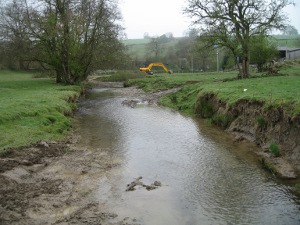
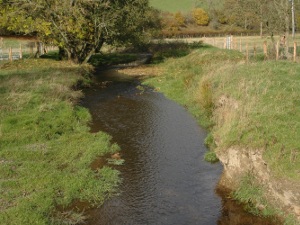
Above: just fencing animals out of rivers allows a rapid recovery. The above photos were taken in the same year on the Cammddwr, an Ithon tributary.
Farm Pollution Management
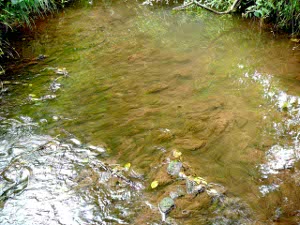 Across much of the lower catchments and flood plains, excessive levels of nutrient, sediment and pesticides resulting, in part, from unsustainable agricultural practices are having a devastating effecting on ecology of the rivers. The requirements of the Water Framework Directive have increased the amount of funding available. This has allowed WUF to deploy qualified staff and continue projects that mange the problem at a farm level. Several projects have already made a contribution to correcting this problem including LARA , WFD , WHIP2 in Herefordshire (financed by Defra's Catchment Restoration Fund) and MOAT in Monmouthshire (DCWW). However, more projects like these will be needed.
Across much of the lower catchments and flood plains, excessive levels of nutrient, sediment and pesticides resulting, in part, from unsustainable agricultural practices are having a devastating effecting on ecology of the rivers. The requirements of the Water Framework Directive have increased the amount of funding available. This has allowed WUF to deploy qualified staff and continue projects that mange the problem at a farm level. Several projects have already made a contribution to correcting this problem including LARA , WFD , WHIP2 in Herefordshire (financed by Defra's Catchment Restoration Fund) and MOAT in Monmouthshire (DCWW). However, more projects like these will be needed.
What Else?
There are continuously on-going projects, issues and schemes. These include
-
The Fishing Passport
-
Fund raising and project building
-
Agricultural abstraction (Wye)
-
Education, presentations and river walks
-
Invasive species eradication
-
Litter and Waste collection
-
Monitoring and Investigation
-
Restoring Wetlands in the upland forests
-
Consultations
-
Resisting inappropriate development (i.e. Severan Barrage)
-
Maintenance
The Fishing Passport: we are continuing to make more sections of the rivers available for anglers, thus benefitting the local economy and returning funding to the rivers. Increasing the economic value of rivers ensures their long-term health. If you are a riparian owner anywhere in Wales or the Marches and want to know more, please contact the office.
There are certain issues and areas where the best chance of success is for the Foundation to press Government for action, the regulation and planning of agricultural development for example. There are as yet unfulfilled promises of placing the onus on fish passage on weir owners. Why should this apparent breach of common law continue?
Then there's the day job: liming the upper Irfon and Wye; keeping the fences up; clearing the fish passes and managing the Passport.
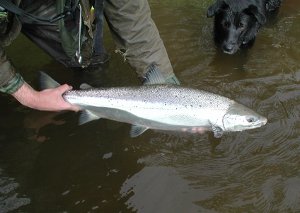 Notes:
Notes:
-
Details of each project are or will be listed as they commence in Current Projects or Completed Projects.
-
Some of these funds apply to strictly specified areas - for example, the Beacons Trust funding must be used for work within the Park.
-
There is a very realistic opportunity to complete all fish access work on Usk and Wye in this period.
Finally, Fund raising - carrying out these plans and securing funds for the future needs matching support: every year we need to raise about £80,000 from anglers and owners. Your support is needed and you can help. Please click here to see how.
